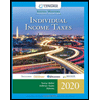
AUDITING+ASSURANCE SERVICES (LL)
11th Edition
ISBN: 9781266448119
Author: MESSIER
Publisher: MCG
expand_more
expand_more
format_list_bulleted
Question
Chapter 20, Problem 20.2RQ
To determine
Concept Introduction:
Proportionate liability: proportionate liability is a presentation of the records of liability that require each member’s participation and ensure that each member attains his or her responsibility towards financial result. It enables the court to allocate the responsibility for the claim of any misreports and wrong action performs by the courts.
To explain: The proportionate liability with the doctrine of joint and several liabilities
Expert Solution & Answer
Want to see the full answer?
Check out a sample textbook solution
Students have asked these similar questions
QUESTION 1
Examine the information provided below and answer the following question.
(10 MARKS)
The hockey stick model of start-up financing, illustrated by the diagram below, has received a lot of attention in the
entrepreneurial finance literature (Cumming & Johan, 2013; Kaplan & Strömberg, 2014; Gompers & Lerner, 2020). The model
is often used to describe the typical funding and growth trajectory of many startups. The model emphasizes three main
stages, each of which reflects a different phase of growth, risk, and funding expectations.
Entrepreneur, 3 F's
Debt(banks & microfinance)
Research Business angels/Angel Venture funds/Venture capitalists
Merger, Acquisition
Grants
investors
PO
Public market
Growth (revenue)
Break even
point
Pide
1st round
Expansion
2nd round
3rd round
Research
commercial idea
Pre-seed
Initial concept
Seed
Early
Expansion
Financial stage
Late
IPO
Inception and
prototype
Figure 1. The hockey stick model of start-up financing (Lasrado & Lugmayr, 2013)
REQUIRED:…
critically discuss the hockey stick model of a start-up financing. In your response, explain the model and discibe its three main stages, highlighting the key characteristics of each stage in terms of growth, risk, and funding expectations.
Solve this problem please .
Chapter 20 Solutions
AUDITING+ASSURANCE SERVICES (LL)
Ch. 20 - Prob. 20.1RQCh. 20 - Prob. 20.2RQCh. 20 - Prob. 20.3RQCh. 20 - Prob. 20.4RQCh. 20 - Prob. 20.5RQCh. 20 - Prob. 20.6RQCh. 20 - Prob. 20.7RQCh. 20 - Prob. 20.8RQCh. 20 - Prob. 20.9RQCh. 20 - Prob. 20.10RQ
Ch. 20 - Prob. 20.11RQCh. 20 - Prob. 20.12RQCh. 20 - Prob. 20.13RQCh. 20 - Prob. 20.14MCQCh. 20 - Prob. 20.15MCQCh. 20 - Prob. 20.16MCQCh. 20 - Prob. 20.17MCQCh. 20 - Prob. 20.18MCQCh. 20 - Prob. 20.19MCQCh. 20 - Prob. 20.20MCQCh. 20 - Prob. 20.21MCQCh. 20 - Prob. 20.22MCQCh. 20 - Prob. 20.23MCQCh. 20 - Prob. 20.24MCQCh. 20 - Prob. 20.25MCQCh. 20 - Prob. 20.26PCh. 20 - Prob. 20.27PCh. 20 - Prob. 20.28PCh. 20 - Prob. 20.29P
Knowledge Booster
Similar questions
- Take value of 1.01^-36=0.699 . step by steparrow_forwardsolve this question.Pat and Chris have identical interest-bearing bank accounts that pay them $15 interest per year. Pat leaves the $15 in the account each year, while Chris takes the $15 home to a jar and never spends any of it. After five years, who has more money?arrow_forwardWhat is corporate finance? explain all thingsarrow_forward
arrow_back_ios
SEE MORE QUESTIONS
arrow_forward_ios
Recommended textbooks for you
 Intermediate Accounting: Reporting And AnalysisAccountingISBN:9781337788281Author:James M. Wahlen, Jefferson P. Jones, Donald PagachPublisher:Cengage LearningPrinciples of Accounting Volume 1AccountingISBN:9781947172685Author:OpenStaxPublisher:OpenStax College
Intermediate Accounting: Reporting And AnalysisAccountingISBN:9781337788281Author:James M. Wahlen, Jefferson P. Jones, Donald PagachPublisher:Cengage LearningPrinciples of Accounting Volume 1AccountingISBN:9781947172685Author:OpenStaxPublisher:OpenStax College Individual Income TaxesAccountingISBN:9780357109731Author:HoffmanPublisher:CENGAGE LEARNING - CONSIGNMENT
Individual Income TaxesAccountingISBN:9780357109731Author:HoffmanPublisher:CENGAGE LEARNING - CONSIGNMENT

Intermediate Accounting: Reporting And Analysis
Accounting
ISBN:9781337788281
Author:James M. Wahlen, Jefferson P. Jones, Donald Pagach
Publisher:Cengage Learning

Principles of Accounting Volume 1
Accounting
ISBN:9781947172685
Author:OpenStax
Publisher:OpenStax College


Individual Income Taxes
Accounting
ISBN:9780357109731
Author:Hoffman
Publisher:CENGAGE LEARNING - CONSIGNMENT

